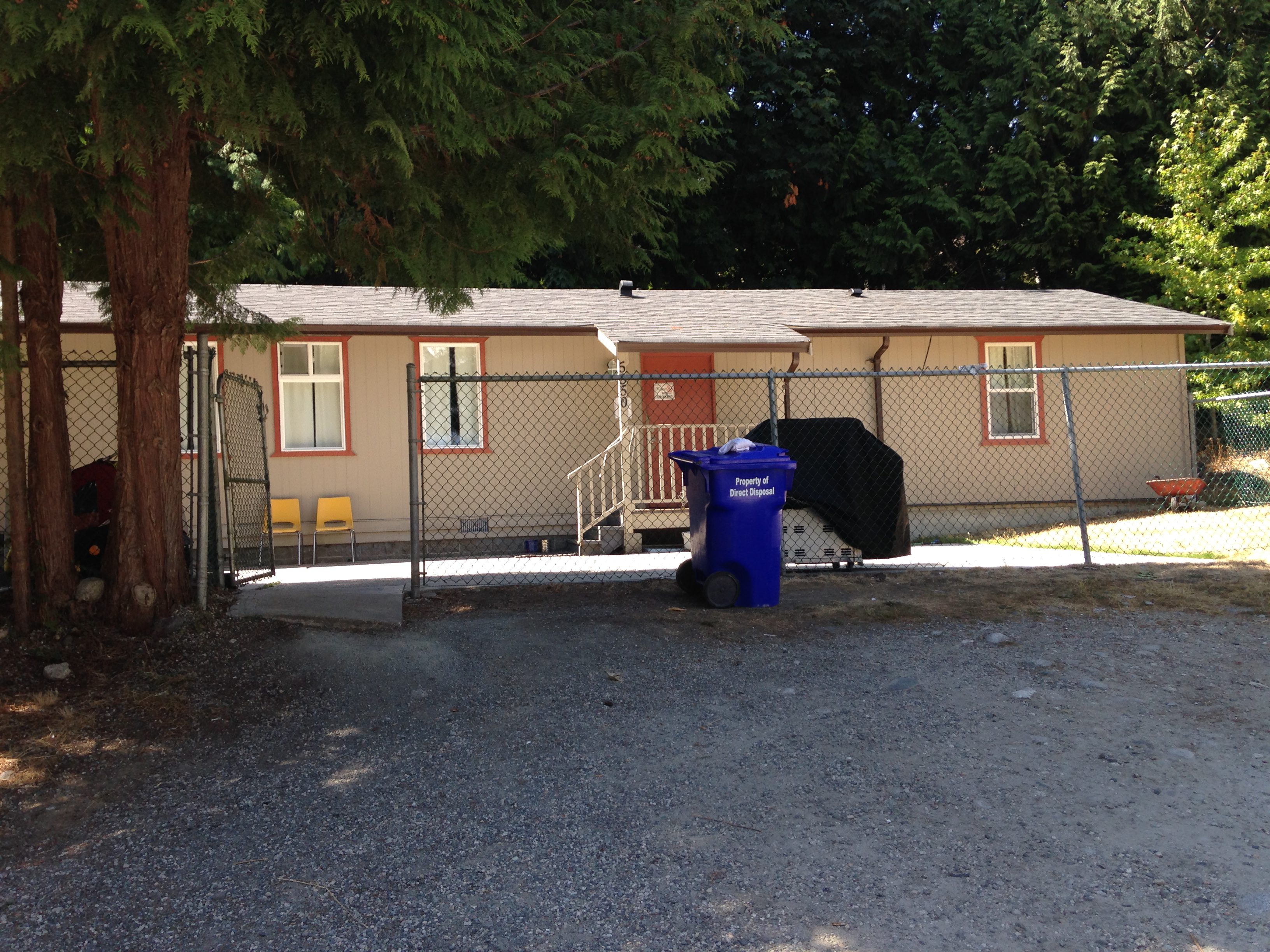
With at least three hundred homeless on the Sunshine Coast, outreach worker Nick Gaskin holds hope for forty new beds
(by Margot Grant)
“Of the 100 homeless people I work with, 35 have regular jobs, and at least half my other clients are actively looking for a job,” says Nick Gaskin, outreach worker and assistant manager of the homeless shelter at St. Hilda’s. “They have the drive and determination to work, but have lost their housing and can’t afford the rentals on the Coast.”
Since Gaskin came to work in Sechelt last November, he has been constantly surprised by what he has seen on the Sunshine Coast. He came from the Downtown Eastside, where he worked as a health-care worker, mental-health worker, and community-liaison worker.
“At the DTES, people are sleeping outside in doorways, and a lot of the clients have mental health or addiction issues. On the Coast, we do have people sleeping outside, but also people who live in their vehicles, people who are couch-surfing, homeless single mothers and fathers with children, whole families who are homeless, women fleeing violence, seniors on fixed incomes, working people, and people with mental health and addiction issues.
“The problem is less visible here, and the demographic is different, but the problem is just as serious.”
Ten years ago, a homeless count on the Sunshine Coast showed 200 homeless people, and Gaskin thinks there are at least 300 now.
Gaskin’s youngest client is 20, the oldest 86. “Homelessness touches everybody: young people who want to start out in life, but don’t make enough money with minimum-wage jobs to afford a rental. It also affects families, and particularly single parents who have to pay for costly childcare on top of rent, and simply do not have the funds to keep a place.”
Increasing numbers of homeless seniors are a particular concern. “They were alone already, with little money, or they have recently lost their partner and the income is not there anymore to afford a rental.
“I know of at least 20 older people living in cars. The way some of them have turned these vehicles into apartments is pretty incredible. But sleeping in your car is not allowed on the Sunshine Coast, so it is a real challenge finding a different place every night.
“Eventually, the cars break down and are towed away, or impounded. The owners lose the last place they had and end up at the shelter. In the last three or four months, I have seen more and more seniors here.
“Younger people are more resourceful: they may have a tent, or friends they can stay with. They are more likely to have a vehicle and are more willing to camp. The younger generation tries to stay away from the shelter.
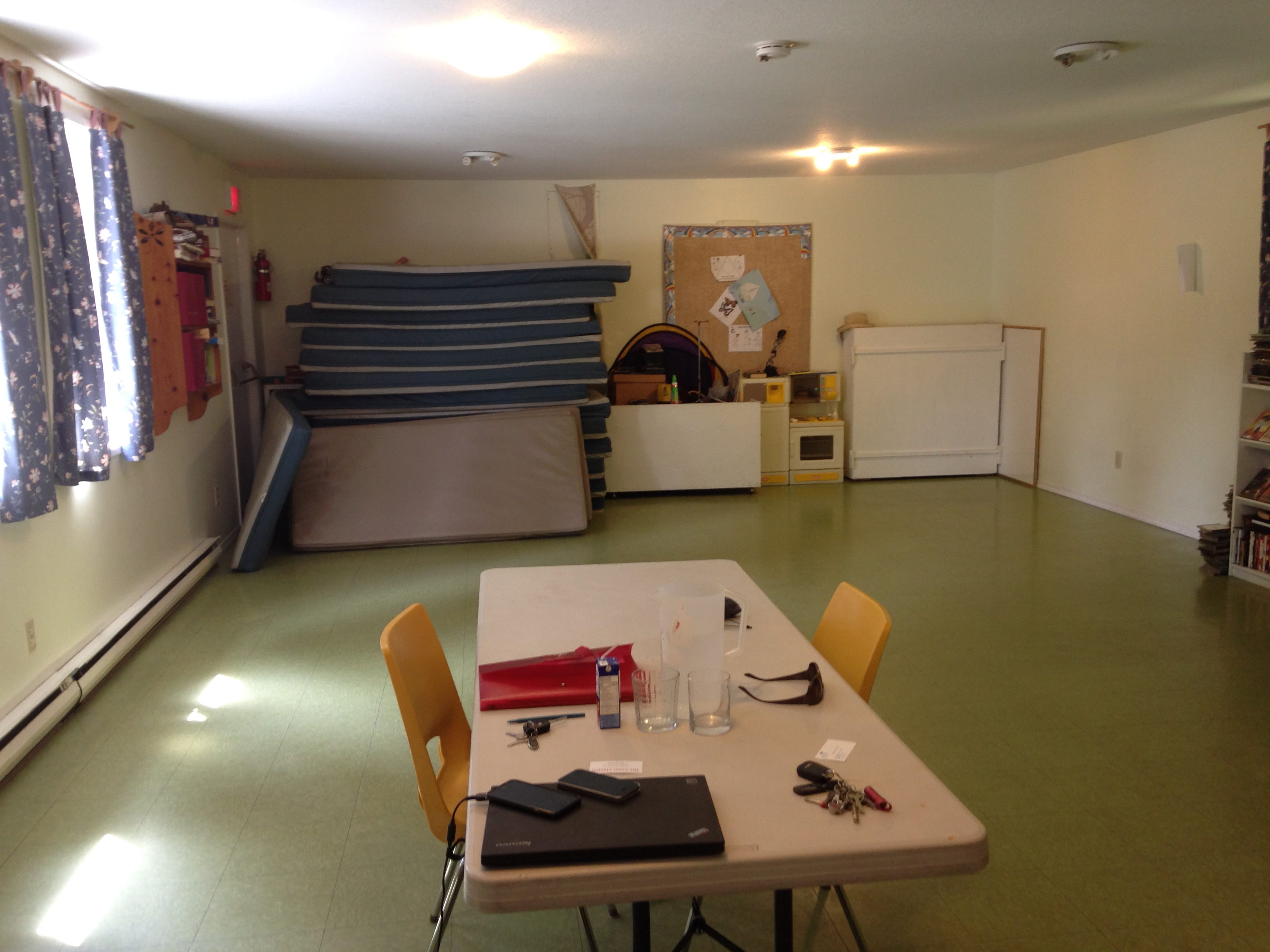
The shelter is a small room, with curtains that do not quite close. The floor covering is green linoleum tile. Fourteen or fifteen mattresses are stacked in a corner. There is a stove but no counter. The hallway has two bathrooms and twelve storage lockers. There is a washer and drier, but no showers. Two small, cramped storage rooms hold supplies like blankets and canned food, and in the corner of the larger of the two rooms, an old desk serves as Gaskin’s office.
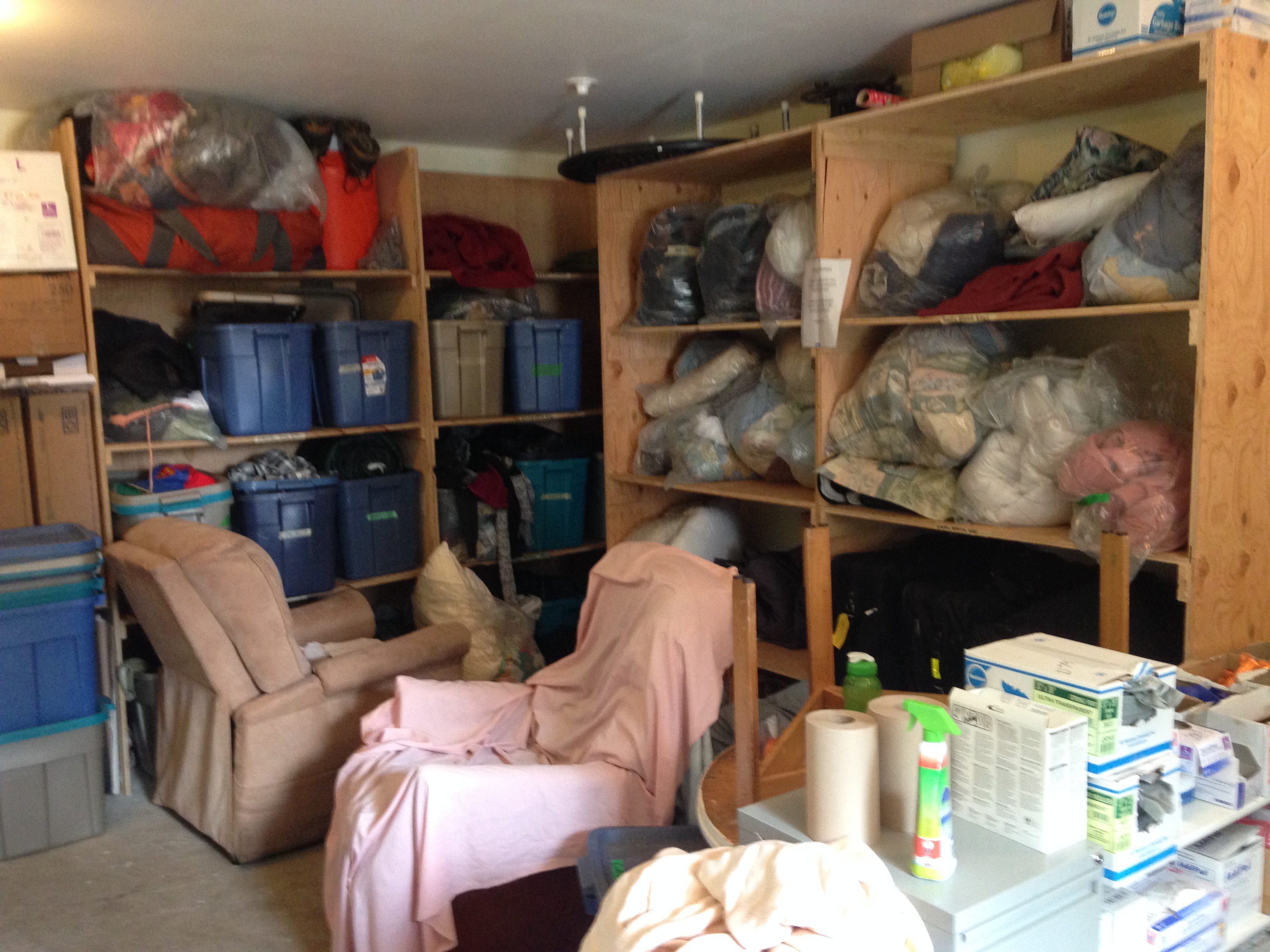
“It is pretty cramped here,” he says. “On a regular night, we have 10 to 15 mattresses on the ground, but in winter, when it’s raining or snowing, we squeeze in 22. No space between the mattresses, no privacy, not enough lockers, no showers. It’s noisy, and there are smells, of course.
“I know at least 50 people who are sleeping rough right now. Not all of them have tents; I can think of five men who sleep in dumpsters, or in bushes on the side of the highway. They keep dry with tarps. I’m always looking for donations, be it money, tents, sleeping bags, tarps, waterproof jackets, gloves, boots, or scarves.
“Donations can be dropped off daily at 4 pm at the shelter, or people can contact me and I will come and pick stuff up. The support of this community has been incredible. This whole winter, every night, someone different would provide a meal for the whole shelter. The monetary donations have been great, and the supplies have been incredible. It’s been really inspiring. We get toys as well.
“I have 20 or 25 clients with children. Families, single mothers with a couple of children, and single dads as well. About 15 or 20 of them are documented; 5 or 10 choose to stay out of the system for now.
“All homeless parents have this fear that they will lose their children to the authorities. The Ministry of Children and Family Development would definitely get involved if someone were sleeping on the street with a child. So a lot of my families are camping, or staying with parents or friends. They still have a roof over their head, but it’s not sustainable, it’s a short-term option. They are without a home.
“The ministry has an obligation to help families with children and asks people like me to try and help these people find housing and emergency funding.
“The hundred people on my official caseload are all documented. But there are probably another twenty or thirty people who I try to help informally, building trust. They don’t want the government to know where they are.
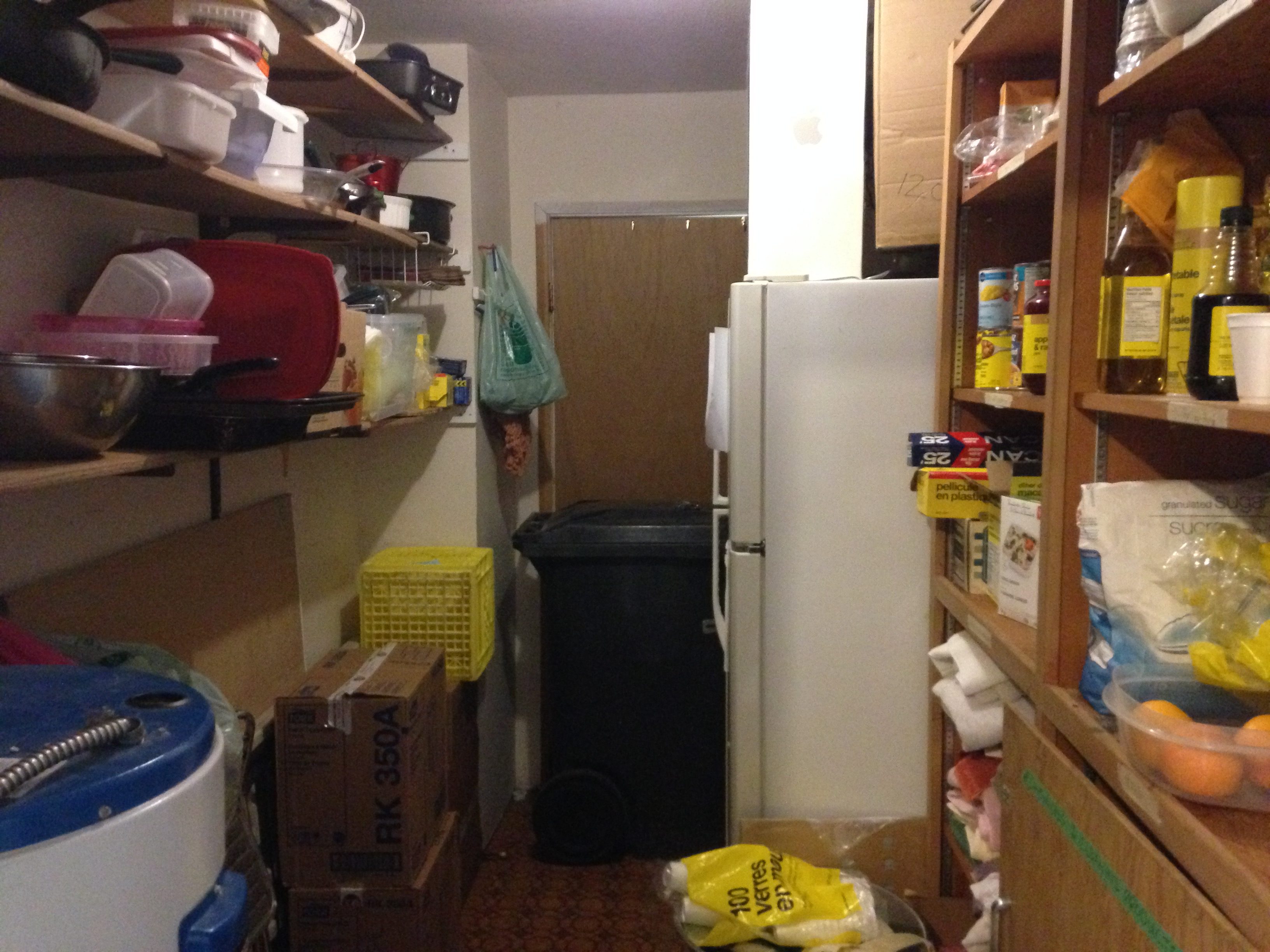
“Some people prefer to live outside. They stay on old boats and places like that. I try to help them with access to health care, and I supply them with clothing, blankets, and food from the food bank if they want.
“Others live in makeshift camps in the woods. I know of seven of such camps between Egmont and Port Mellon; there may be more. It is definitely safer than camping alone; I’ve heard lots of stories about encounters with wildlife. Living together in a camp gives a feeling of community; it’s nice to be with people with a similar mindset and shared values.
One camp has 15 people, but you would never know it’s there. Walk up a trail for about 40 minutes, then branch off into the bush. Eventually, you come to a clearing with a number of tents, and picnic tables around a barbecue. On Food Bank days, they head down for supplies, and at night they winch them up into the trees because of the bears.
Some of the camps are complex; people spend a lot of effort and time making them as liveable as they can, but asked if they would rather live indoors, 80 or 90 per cent said they would. They’ve already filled out B.C. Housing applications.
“A lot of people in the camps have regular jobs,” says Gaskin. “At a small camp of three people near Sechelt, the boss picks them up at 8:30 am by the side of the road and drops them off at 4:30 pm.”
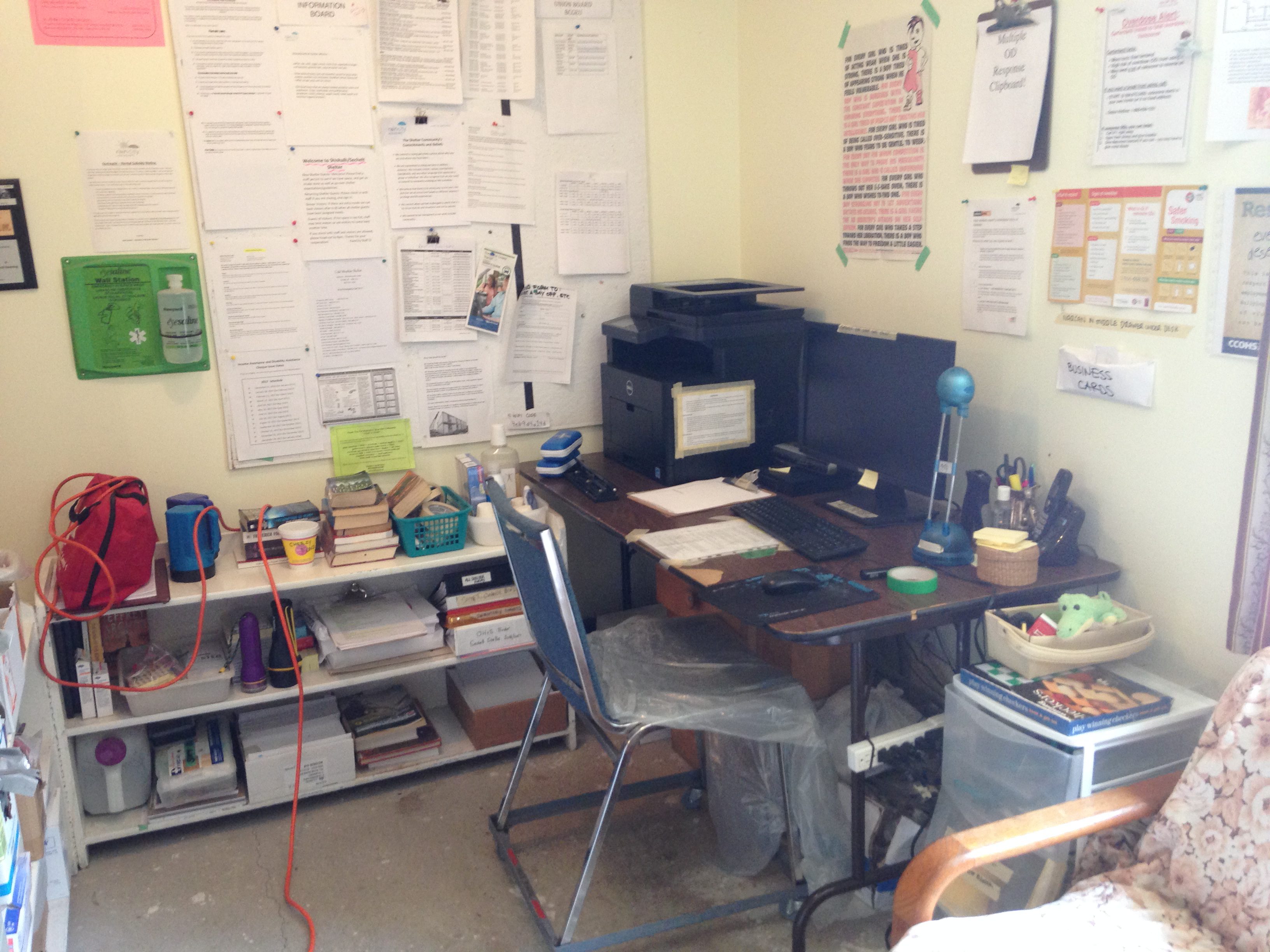
How can homelessness be solved? Gaskin thinks for a while.
“It’s complex. Unless we get some regulation around Airbnb and an increase in subsidized housing, it is going to be really challenging to solve this problem on the Coast. It requires an effort on all levels of government, from federal to local.
“Right now, we have a perfect storm: the rise of the Airbnb market, an influx of people who can’t afford Vancouver anymore — I am seeing at least 15 families from Vancouver — and a serious lack of subsidized housing.
“I don’t want to put the blame solely on Airbnb, but two weeks ago I looked at how many places were available on the Coast. That day, there were 10 one-bedroom apartments for rent on Craigslist, and eight two-bedrooms; eighteen long-term rentals in all. But there were 248 listings on Airbnb with one or two bedrooms.
“Of course, not all of these 248 had been long-term rentals. But even if you were to take half of that, that is 120 rentals that are off the market.
“I can see both sides of the coin. It is not the homeowner’s responsibility to provide affordable housing. But on the other side, as a community, we have a certain moral obligation.
“We need to know more about how Airbnb is affecting our local communities. The regional district recently did a survey and I’m interested what the findings are. I think we need more regulation in this field.
“Fewer and fewer people can afford to rent on the Coast. Last week, there were only five one-bedrooms on Craigslist, with an average rent of $1,200. People on assistance cannot possibly afford that.
“There are three kinds of assistance. Regular income supports people whose employment insurance benefits have run out but who are looking for work. People with long-term chronic afflictions get disability pay, and then there are so-called people with multiple persistent barriers — for instance someone with a hearing impairment who can work. It’s just very hard to find work.
“The three categories get different amounts of money every month, but they all get $375 for shelter. Somebody on regular income assistance receives another $320 a month to live on. The extra $100 per month the new government has pledged is only going to disability clients for now.
“We definitely need more subsidized housing, provided by the government, with subsidized rents. B.C Housing does great work but there are huge waiting lists. On the Coast, the current waiting time is two to three years. As market rents go up, that will only become longer.”
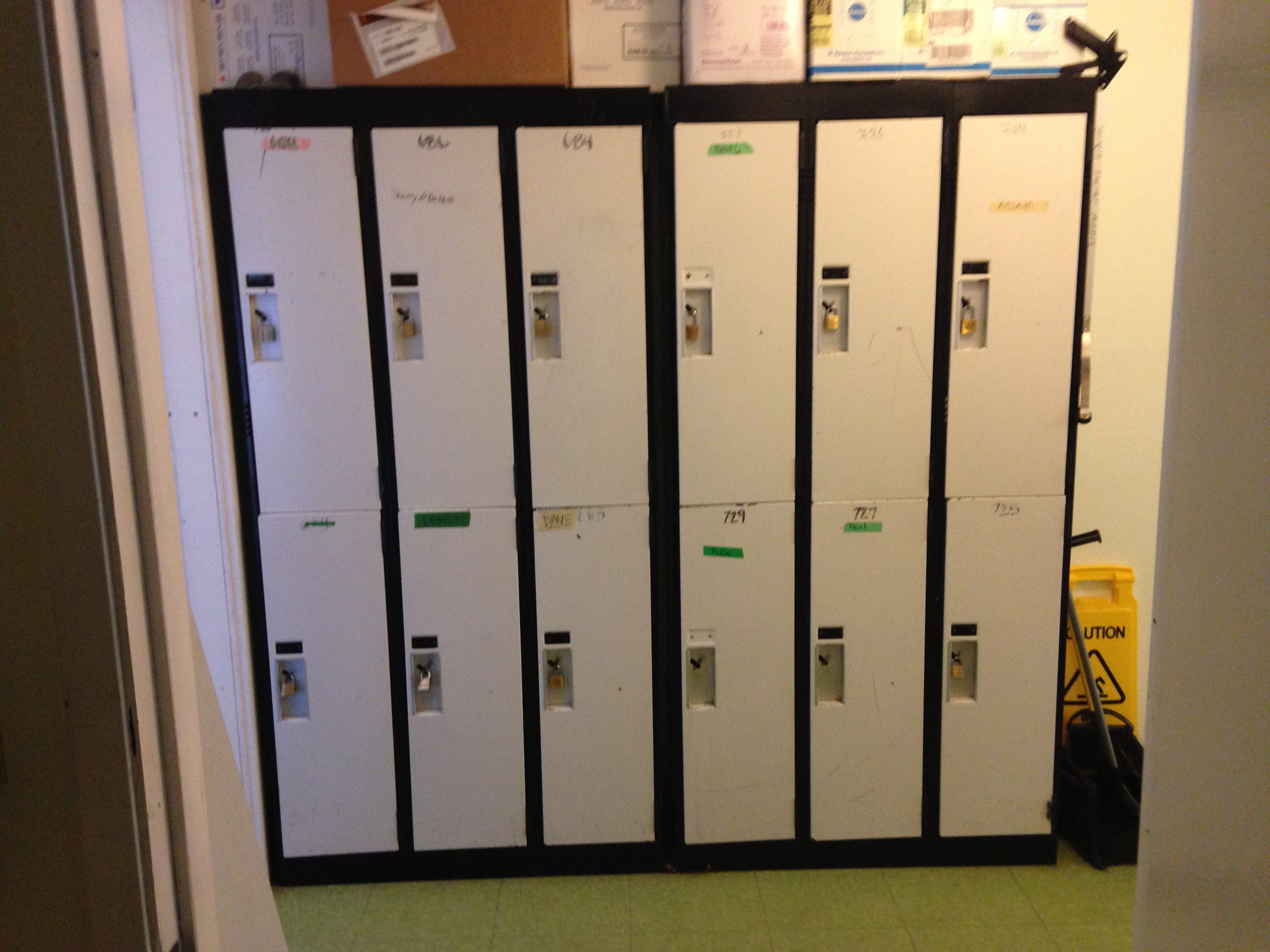
The homeless shelter at St. Hilda’s has been operating for two years. Initially, it was only open through the winter, but when B.C. Housing learned about the increased need for a shelter, funds were made available for it to be open in the summer as well.
St Hilda’s congregation voted in favour of the extension, but it is clear the shelter has outgrown the premises. The church needs the space for Sunday school, and several groups use the room in the daytime. The shelter is open from 4 pm to 8 am.
B.C. Housing is looking to lease a lot on the corner of Trail and Ebbtide from the district of Sechelt to build a modular shelter for 40 people. Clients would have more privacy, with only two bunk-beds to a room, a fully functioning kitchen and washrooms with showers. The new shelter would have more staff to help people find work.
Gaskin fully expects initial opposition from the neighbourhood. “In every community, all over the world, there are always people who do not want a homeless shelter on their doorstep. They fear crime, loitering, drugs, noise. But if you want to know what a shelter in Sechelt means, speak to St. Hilda’s, speak to the local community there. I’d like to think that they speak very favourably of us. We have tried to immediately remedy any concern that has come up. In fact, there was a noise complaint from someone behind us, but the noise stopped the same day.
“We have to be respectful to our neighbours. As St. Hilda’s Reverend Clarence Li said the other day: ‘We belong to each other’.” We are all humans, and we all have a duty to take care of one another.”
Nick Gaskin can be reached at 604-740-1290. ngaskin@raincityhousing.org
Excellent work, Margot. A real eye-opener and and important for the community. I will do what I can to redistribute this.
Rik
To me, this is not a proper homeless shelter – it is void of prettiness, life spark, just an ugly box, not even showers. Can’t developers and gov’t money come up with something more creative, more beautiful, and have a place that people can feel good about staying while in transition?
Sad to hear how older people have less options than the younger generation, wonder how to change that.
maybe developers need to develope more and build nothing for anybody but their overstrectched pocket books full of money.More high end apartments such as slated for gibsons.more overdensified so called “villages”like the gospel rock proposal.All this so called economy leaves the country.When you think of the imbalance and all the wealth that is in the society today,why cant this wealth be shared?
Great article – but pretty sobering!
It disgusts me that the housing situation has been allowed to deteriorate this way. No one should be homeless, but especially not seniors, people with disabilities and people who have full-time jobs! This is the outcome of decades of neoliberal ideology that puts private profit above human need. A whole generation has grown up believing that a certain amount of homelessness is inevitable. This is not the case. This was entirely preventable had our society not decided to embrace a cult of greed.
I attended the information meeting in Sechelt Aug. 16 where RainCity and BC Housing staff answered questions and recorded concerns. They do have plans to build a permanent supported housing and shelter building in Sechelt. That will take about three years given the time it will take for approvals from Sechelt and construction. St. Hilda’s has been extremely generous donating this portable for many years but the space is no longer available. The site of the proposed temporary shelter is on the old sewer plant. I was part of the Extreme Weather Emergency Shelter Committee that looked continuously for shelter sites for about 10 years. Sechelt has stepped up with this temporary site when no other government or land owner has come forward. Some of the neighbours are objecting vociferously so I hope Sechelt Council continues to act for the good of whole community in the face of such anger. There is no other option at this time and we clearly must have a shelter.
Hello Nick,
Actually the shelter started in the winter of 2011-2012.
it went from the church’s front entrance way to the pews to the church auditorium then to its present site after the Montessori school moved out.